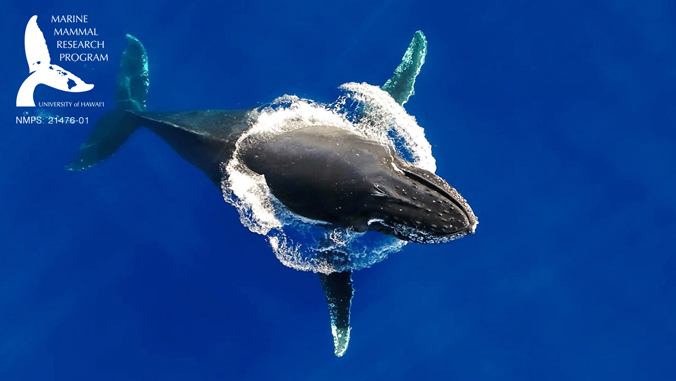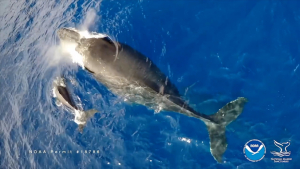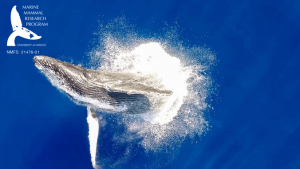
To get a unique look at how climate change is impacting marine mammals, UH News interviewed whale expert Lars Bejder, director of the Marine Mammal Research Program at the University of Hawaiʻi at Mānoa Hawaiʻi Institute of Marine Biology, on how innovative technologies are helping experts monitor the health of marine mammals.
Bejder is a conservation biologist who focuses on marine mammals such as whales and dolphins in Hawaiʻi and internationally. He utilizes drones and specially designed sensors to gather data on cetaceans.
What species of marine mammals do you monitor?

Hawaiʻi has more than 20 species of whales and dolphins. We study between 8–10, and each one of those have different conservation issues and pressures.
The most iconic species we have in Hawaiʻi is the humpback whale that spends about three months a year here on their breeding grounds. We study the Hawaiian monk seals, which are only found here in Hawaiʻi and spinner dolphins, which is a coastal species. We also study pilot whales and false killer whales. Some generic threats for all of them are entanglements, ship strikes, noise pollution and climate change, and depending on the species, some are more or less affected by each of these.
What kind of tech are you using?

Using innovative technology such as drones and tags, we’re starting to get a good understanding of how humpback whales change from year to year based on climatic events. For example, a few years ago, when there was a large heat wave across the North Pacific, we saw significant declines in humpback whale health or body condition, which shows us how closely these animals’ health are linked to climate.
The two main new technologies that we use are calibrated drones and suction cup tags, the suction cup tags we use across species—so humpback whales, pilot whales, false killer whales and monk seals. We apply these onto those animals and acquire an incredible wealth of data. We use drones to estimate body condition and health of individuals and populations, and we use those across all of the different species that are here in Hawaiʻi.
How are you using tech to monitor humpback whales?

We have collected the world’s largest database on humpback whale health. And when I say health, it’s body condition which we measure through drones using calibrated lenses and custom fit altimeters. We’re able to fly these instruments repetitively over the same animals across ocean basins. So on the breeding grounds here in Hawaiʻi and also on the foraging grounds up in Alaska, we can really see how the body condition of these animals changes every season and every year. We have now measured 10,000 humpback whales. And when you think about it, the population estimate here in Hawaiʻi is between 12,000 and 14,000. So a significant amount of the animals are visiting Hawaiʻi. The fact that we also measure them up in Alaska allows us to see how much energy and condition they lose here in Hawaiʻi and vice versa.
How is climate change impacting humpback whales?
If you have a very good year, for example, the conditions are right, you’re going to have a lot of prey, and things are good for the whales up in Alaska. And a year later, you see that the animals are healthy, they’re large, and you’re getting calves. But what we’re also finding is when we have a bad year, for example, climatic events that are not good for prey items up in Alaska, the year later, we have significantly skinnier animals and less calves being born. And that’s really telling us something about the health of the oceans is portrayed through these animals. By simply flying a drone over animals, we can say something about the health of the ecosystem, and that’s really, really promising and exciting.

